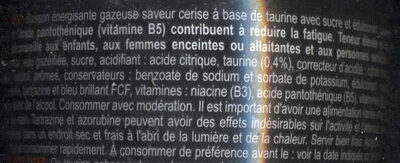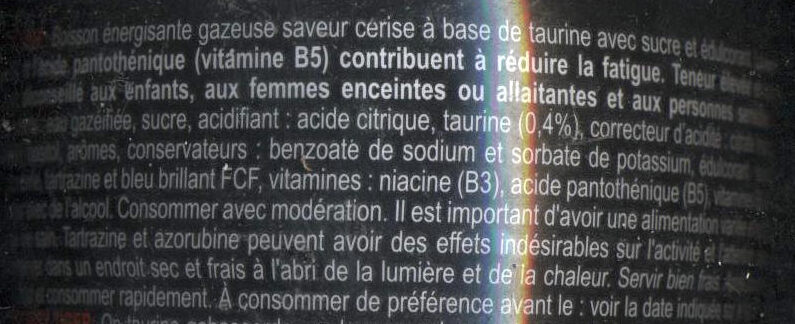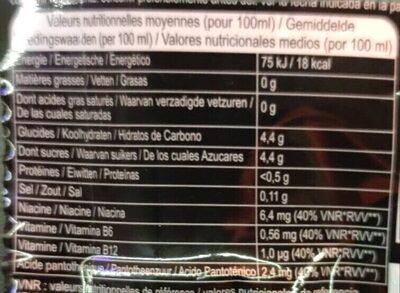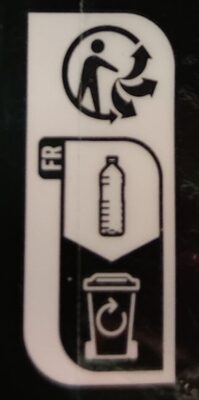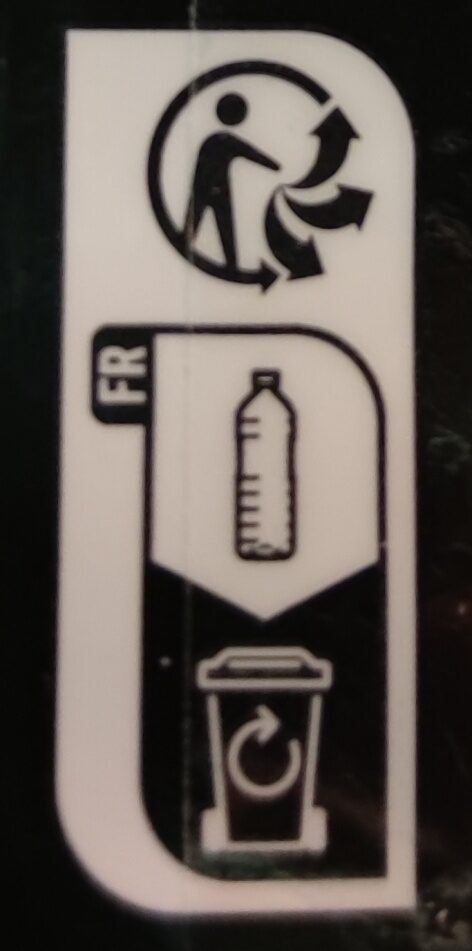Crazy Tiger - Saveur Cerise - 500 ml
Barcode: 3760205598241 (EAN / EAN-13)
Common name: Boisson énergisante gazeuse saveur cerise à base de taurine avec sucre et édulcorant
Quantity: 500 ml
Packaging: fr:Triman
Brands: Crazy Tiger
Categories: Beverages, Carbonated drinks, Artificially sweetened beverages, Carbonated soft drinks without fruit juice, Energy drinks, Carbonated soft drinks without fruit juice with sugar and artificial sweeteners, Sweetened beverages
Labels, certifications, awards:
Triman
Origin of ingredients: Unspecified
Link to the product page on the official site of the producer: https://www.crazytiger.fr
Countries where sold: France
Matching with your preferences
Report a problem
Data sources
Product added on by openfoodfacts-contributors
Last edit of product page on by bugmenot.
Product page also edited by cfgym69, ecoscore-impact-estimator, kcirreip, kiliweb, yuka.sY2b0xO6T85zoF3NwEKvlh1EUfPQuxSUGxjQxkizm4jeDp_lOvMi2LDcGas, yuka.sY2b0xO6T85zoF3NwEKvlh1mTt34oGvGJUfnkmmI-f61HsbCe-h7-5Xjaqs, yuka.sY2b0xO6T85zoF3NwEKvlhEcTYOArDTPJR3gtkuxnNmXPqz4Yf113I3BKKg, yuka.sY2b0xO6T85zoF3NwEKvlhVXCf_YpwnpMhvmq2GizNicE47vO_pT_obGbas, yuka.sY2b0xO6T85zoF3NwEKvlhZND9iF8xDNFTDuumKF_MveNaDOeIFV-aygFKs, yuka.sY2b0xO6T85zoF3NwEKvlhxMcuvCm22VaiH4x1W1wf2LM7vSboF02q6kK6g, yuka.sY2b0xO6T85zoF3NwEKvlk9lWd__vBLfOBbSvxSC3u2VD8fxQcN94bKjEqs, yuka.sY2b0xO6T85zoF3NwEKvlkhKdMH3ngzGFjXUxkus5tOsDsLVSPQr25DbAqs, yuka.sY2b0xO6T85zoF3NwEKvll5MbeT5rjbEO0z4iBGG7fffK7PnPu1dzLH4I6g, yuka.sY2b0xO6T85zoF3NwEKvllBdaODjmTzkE03umnS3_sigCK6wQc9u6Lf3OKs, yuka.sY2b0xO6T85zoF3NwEKvlldAaeDugzDLFgfhoHDX4fiHK83pUPZY79H0M6g, yuka.sY2b0xO6T85zoF3NwEKvllxDTObguDHLFAPSv0Pa3t2KKIHMTPVV2rOrLas, yuka.sY2b0xO6T85zoF3NwEKvlm9iV-LfoQ3LOwLRpHWm2cqwCsPhZ9NxuNnLH6o, yuka.sY2b0xO6T85zoF3NwEKvlmEcb9H3-RnNNxLfsE-m5PCxLI72fshW6YXiPqs, yuka.sY2b0xO6T85zoF3NwEKvlmhpWNX_8hn5EUXfm2rX5vSJK6LKP9Z9zLHYEao, yuka.sY2b0xO6T85zoF3NwEKvlnJ1Wt_7rimaaBrQp0qu2_OyMqTUbd5YyNfxK6s.


